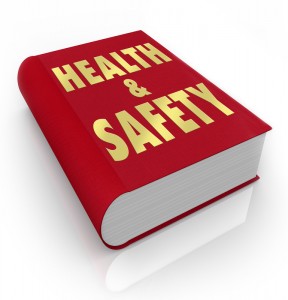 Farm Safety
Farm Safety
There is no kind of workplace without some form of risks and hazards, not even a dairy farm or factory. The dangers involved in dairy farming and processing are so many that it’s not only important to reduce injury risks but also put in place effective emergency and first aid response measures. The workers should know how to handle an accident or emergency, which basically constitutes where to seek help and what to do. Lack of such farm safety procedures is among the issues that make employers liable for their employees’ injuries.
The Milk Factory that Got Milked Off its Money
On 26 October 2011, two workers of Meadow Foods Ltd were doing their job when hot water from a 600 litre tank rained down on them and scalded them badly. On 6 March 2014, the Chester-based dairy firm had to part with £54,000 in fines and £18,553 in costs for breach of the Provision and Use of Work Equipment Regulations 1998 and the Health and Safety at Work etc Act 1974.
Chester Magistrates’ Court learnt that the two workers, who asked to remain unnamed, were cleaning the tank at the milk, cream, and butter processing site on Rough Hill in Marlston-cum-lache when the accident occurred. This prompted the Health and Safety Executive (HSE) to investigate the system used for cleaning the tank, and it was found to be below the minimum legal standards. There was a complicated series of changes to the ten tank valves involved in the cleaning procedure but Meadows Foods had failed to provide any diagrams or written instructions on how to do this. The valves required a specific sequence of opening and closing them.
One of the two workers opened a valve and the compressed air that had built up in the pipes was forced into the tank, in effect causing 70 degrees Celsius of water to rain down on them. The 22-year-old male worker sustained burns to his head, left arm, and lower back, and his 35-year-old female colleague suffered burns on the whole body. They were treated at Whiston Hospital. The female worker had to spend a week in the specialist burns unit followed by several weeks off work.
First-Response Measures
Burns are some of the injuries workers in the dairy industry face every day. Unfortunately, there are many more dangers that an injured worker faces between the accident site and the hospital. Remember that dairy farms are usually in isolated areas, which means emergency medical assistance can take a long time to arrive.
When a serious injury occurs, therefore, the worker’s chances for surviving improve
tremendously when the first response is first aid. They are assisted with breathing and heavy bleeding is stemmed while waiting for emergency medical assistance. This makes it essential for every dairy worker to have training in first aid, and their skills to be matched by the right equipment for the workplace. This means there should be at least one first-aid kit. The dairy first aid kit should be serviced regularly and by a medical supply business. Among the employees should be a first response person, too, whose responsibility is maintaining the first aid kit and assisting anyone who is hurt. He should be known to all and his contact information taught upon hiring.
Bring in your staff and even family when developing the emergency response procedure. Also program occasional drills and use them to teach all workers of the right procedures. The safety failures of Meadows Food Ltd were in not identifying basic risks on the site in spite of having carried out a risk assessment for the cleaning process some months earlier. These risks were such as pressure build-up and hot water burns. The company should have provided instructions and photos of the cleaning process, reduced the water temperatures, and modified the tank to prevent the water’s escape in time so as to prevent the incident. Perhaps what saved two lives that day was the emergency response.
Get Emergency Response Solutions
It does not matter what your industry is. There are emergency response procedures and
measures tailored for different types of injuries. Speak to our health and safety consultants today on 0800 1488 677 for professional advice on the right measures to put in place at your workplace.

A chartered (fellow) safety and risk management practitioner with 20+ years of experience. David provides a healthy dose of how-to articles, advice and guidance to make compliance easier for construction professionals, Architects and the built environment. Get social with David on Twitter and Linkedin.



